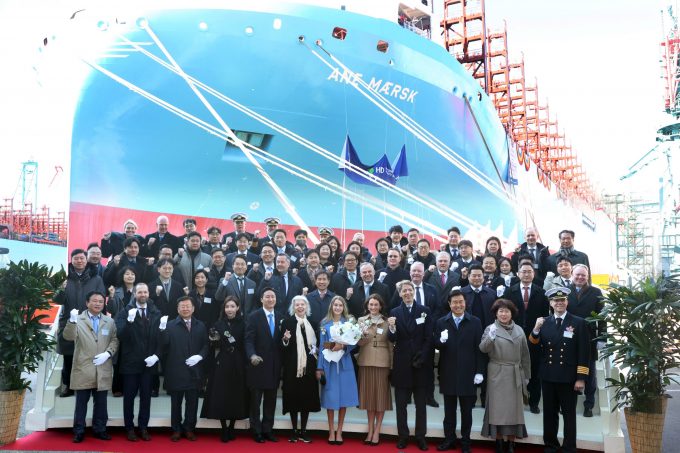X-Press Pearl claims case reopened after allegations of corruption
The 2021 X-Press Pearl fire, reportedly the worst maritime disaster in Sri Lanka, has become controversial amid ...
MAERSK: TRUMP TRADEKNIN: THE SLIDELINE: DEBUT AAPL: ASIA CAPEXDHL: THE HANGOVERXPO: ELECTION DAY RALLY BA: STRIKE OVER GXO: SHEIN AND TEMU IMPACT GXO: PAYING DOWN DEBT AND ORGANIC GROWTH GXO: WINCANTON REGULATORY RISK GXO: PEAK SEASON GXO: WINCANTON STILL A DRAG GXO: FREE CASH FLOW CONVERSION GXO: RETAIL VS INDUSTRIAL TRENDSGXO: WINCANTON UPDATEGXO: CORNERSTONE DEAL SIGNED IN EUROPE GXO: STELLAR THIRD QUARTER GXO: CONF CALL ON THE WAYDSV: DHL READ-ACROSS IN FORWARDING
MAERSK: TRUMP TRADEKNIN: THE SLIDELINE: DEBUT AAPL: ASIA CAPEXDHL: THE HANGOVERXPO: ELECTION DAY RALLY BA: STRIKE OVER GXO: SHEIN AND TEMU IMPACT GXO: PAYING DOWN DEBT AND ORGANIC GROWTH GXO: WINCANTON REGULATORY RISK GXO: PEAK SEASON GXO: WINCANTON STILL A DRAG GXO: FREE CASH FLOW CONVERSION GXO: RETAIL VS INDUSTRIAL TRENDSGXO: WINCANTON UPDATEGXO: CORNERSTONE DEAL SIGNED IN EUROPE GXO: STELLAR THIRD QUARTER GXO: CONF CALL ON THE WAYDSV: DHL READ-ACROSS IN FORWARDING

Amid news that Maersk conducted its first ship-to-ship methanol bunkering on the newly delivered Ana Maersk at the weekend, new research finds methanol forging ahead of its alternative fuel competitor, ammonia.
The 16,200 teu Ana Maersk (pictured at its naming ceremony last week) bunkered ship-to-ship at the port of Ulsan in South Korea, which opens up the possibility of bunkering methanol at ports unequipped with quayside infrastructure, marking a milestone for its mainstream adoption.
Ulsan Port Authority president Kim Jae-gyun said the port would be “reborn” as a hub for the supply of new fuels.
“Following the success of the world’s first green methanol PTS bunkering for containerships in July last year, Ulsan has succeeded in green methanol STS bunkering for a very large containership,” he said.
The development follows last week’s MoU signed by X-Press Feeders and Evergreen to provide methanol-dual-fuel feeder services to Evergreen European shipments.
“We are pioneering the use of dual-fuel vessels and we decided to take delivery of our vessels sooner, rather than later, because we know we need to take significant steps today to meet the targets for reductions in GHG emissions,” said Francis Goh, X-Press Feeders’ COO.
X-Press Feeders has 14 dual-fuel methanol vessels on order, which are due to begin delivering in the second quarter, while Maersk has 17 on order. In fact, some 9% of new ship orders over the past year are for methanol-fuelled ships, whereas just 1% were for ammonia, DNV reveals in its latest Alternative Fuels Insight (AFI) report.
The AFI numbers suggest methanol has overtaken LNG in newbuild orders. LNG is still considered by some to qualify for ‘alternative fuel’ status despite being a conventional fossil fuel. Of the 20% of newbuild vessels powered by ‘alternative fuels’, as defined by DNV, only 7% were LNG, 2% fewer than the methanol figures.
This is unlikely to please everyone. Late last month, industry LNG lobby group SEA-LNG took aim at the mounting methanol hype. Commissioned by SEA-LNG, a study by UK consultancy Thetius, The Maritime Alternative Fuels Barometer, pointed out that of the few methanol-fuelled ships operating, most were using grey methanol, a fuel whose fossil-powered manufacturing processes mean it has “higher CO2 emissions on a well-to-wake basis” than conventional low-sulphur fuel.
“It’s possible that awareness around this is lacking, making it appear to be the holy grail of alternative fuels, when the reality is far from it,” the study’s authors wrote.
The study also found that ‘methane slip’ was on the decline, and SEA-LNG unsurprisingly concluded that LNG would remain a key maritime fuel.
Steve Esau, SEA-LNG chief operating officer, said it was “clear” that “by 2050, deepsea shipping will rely on multiple fuels, including LNG, as it transitions from a fossil fuel through bio to e-LNG. The lessons learnt from the introduction of LNG as a marine fuel will benefit all alternative fuels”.
Comment on this article